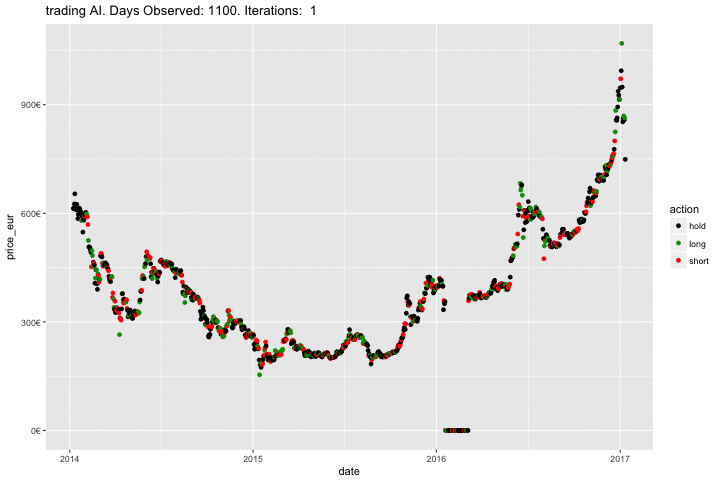Training deep Q learning on BTC/EUR
For this blog post, we've decided to take the algorithm from part I, and train it on Kraken BTCEUR exchange data. The features that were used for learning the Q function (the AI part, the magical black box that is able to look at the data and tell you what action will yield the best reward):
We've trained a model for up to 150 iterations on Nvidia Tesla K80 GPUs on three different datasets, each roughly 200 days shorter than the previous one. On this setup, it took about 6-7 hours per dataset.
Well, let's see what training these models looks like!



Notice the huge fluctuations in how "decisive" our AI trader aims to be when the iteration count is low: the AI is still learning and starts acting too optimistically, only to find out that it's much more valuable to predict long-term trends rather than playing the "guess tomorrow's price" game, hence the charts become mostly all "hold" towards the end of learning. However it still does not possess the decisiveness and steady hand of a human, and decides to take an odd trade every once in awhile in order to keep searching for a new "alpha" and correct course if need be.
Would you want to learn to train such AI that will help you trade smarter? Would you like to get your hands on the source code for this model and adapt it to your needs with your custom features, to combine machine and human intelligence?
When we launch Rados our subscribers will get access to realtime diverse datasets, insights powered by market research and AI assistants, and premium educational content along with the tools and/or source code needed in order to learn, for both beginners and seasoned quants looking at this new market.
In the meantime, let us know if you want to see the sources in the comments section below, resteem us, and when we get to 100 steemit followers we will publish the code in our blog.